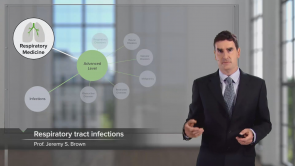Inference for Regression

Über den Vortrag
Der Vortrag „Inference for Regression“ von David Spade, PhD ist Bestandteil des Kurses „Statistics Part 2“. Der Vortrag ist dabei in folgende Kapitel unterteilt:
- Inference for Regression
- Example: Body Fat
- Pitfalls to Avoid
Quiz zum Vortrag
What is not true of the regression model?
- The residuals can be viewed as estimates of the mean value of the response variable for each value of the explanatory variable.
- The response variable is assumed to have a normal distribution for each value of the explanatory variable.
- By performing linear regression, we are estimating the mean value of the response variable for each value of the explanatory variable.
- The fitted values of the response variable are used as estimates of the mean value of the response for each value of the explanatory variable.
- The residuals are an estimate of deviation from the estimated mean.
For a sample size of n, what is the distribution of the test statistic in the test for the slope?
- The test statistic follows a t-distribution with n−2 degrees of freedom.
- The test statistic follows a normal-distribution with mean 0 and variance 1.
- The test statistic follows a t-distribution with n degrees of freedom.
- The test statistic follows a t-distribution with n−1 degrees of freedom.
- The test statistic follows a t-distribution with n+1 degrees of freedom.
What is not a condition we need to have satisfied in order to make inferences about the regression line?
- The scatterplot of the response variable against the explanatory variable shows random scatter about 0.
- The residuals are nearly normal.
- The plot does not thicken.
- The observations are independent of each other.
- A scatterplot of the response through the explanatory variable is nearly linear.
What do we use to quantify spread around the regression line?
- We quantify the spread around the regression line by using the standard error of the slope.
- We quantify spread around the regression line by using the standard error of the intercept term.
- We quantify spread around the regression line by using the mean value of the explanatory variable.
- We quantify spread around the regression line by using only the sample standard deviation of the residuals.
- We quantify spread around the regression line by subtracting the standard deviation from the mean.
What is not true of the inference procedures for a slope?
- Fitting a linear regression to data that is not linear will not have a negative effect on the inference procedures for a slope.
- Being careful of thickening plots will not have a negative effect on the inference procedures for a slope.
- Making sure that the residuals are nearly normal will not have a negative effect on the inference procedures for a slope.
- Being careful of outliers and influential points will not have a negative effect on the inference procedures for a slope.
- Verify if a one-tail or two-tail test is appropriate.
Kundenrezensionen
5,0 von 5 Sternen
| 5 Sterne |
|
5 |
| 4 Sterne |
|
0 |
| 3 Sterne |
|
0 |
| 2 Sterne |
|
0 |
| 1 Stern |
|
0 |





